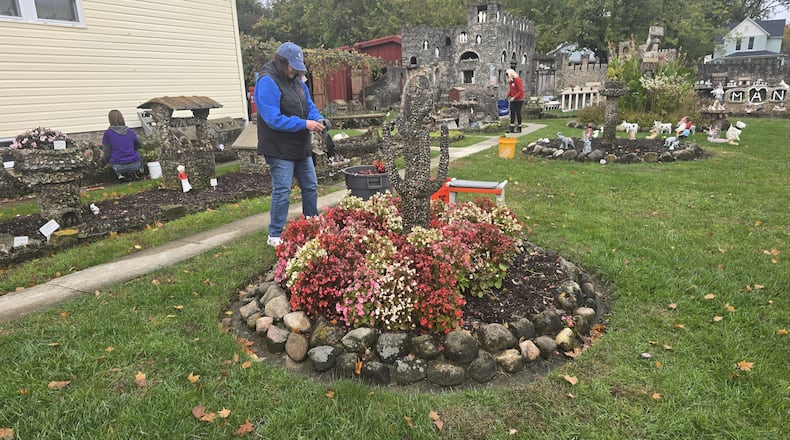Many pollinators and other creatures take cover in the duff or among the leaves. My philosophy is to do the best I can for pollinators, but not make it difficult for me in the spring. In addition, too many leaves on a lawn can cause problems for turf growth in the spring.
Starting with lawns, it’s ok to mow over the grass and chop up the leaves. The chopped leaves eventually break down, improving the soil for good turf growth as well as the critters that overwinter in the soil.
Yes, you might mow over a caterpillar or two while in the process, but others will survive in flower beds if there are leaves and other plant debris to provide cover. The key is balance; balance between easily maintaining a lawn and garden while also promoting pollinator development.
The next area is the perennial bed. I approach my vast perennial garden’s winter preparation a little at a time. If something looks bad and doesn’t provide any pollinator or aesthetic purpose, I go ahead and cut it back. Sometimes, I leave the dead foliage under shrubs or other still-standing perennials and let it decay over time.
I have an area behind my shrubs, and put dead plants (chopped up) in this area to break down, adding organic matter to the soil. Anything else, except weeds, goes to the compost pile. Weeds go to another pile and decay over time.
In terms of providing housing for many native bees, I leave a few sturdy stems on my coneflowers and a few other plants. These stems can be used next spring by these bees for housing. Eventually, once plants start to grow in the spring,
I cut them back and tuck them under shrubs to let the bees finish development.
I had a reader inquire about my column last week regarding the idea of replacing lawns with all native plants. Her question was how to maximize the protection of pollinators. Balance. It’s ok to use herbicides or insecticides if they are used properly and at the right time.
In terms of pesticide treatments on the lawn, ask your lawn care company if they are warranted. I am opposed to broad-spectrum insect applications for “just in case.”
Do you have grubs, and if so, are you ok with them destroying the lawn, or do you want to act? The right pesticide at the right time won’t necessarily kill everything. Pick the least toxic pesticide for the problem at hand.
As the lawn care treatments, find out what they are treating for and determine if it’s necessary. If your lawn is fertilized regularly, you may not have to treat for broadleaf weeds as they struggle to grow in thick turf.
Again, balance is the key. We don’t want sterile lawns and gardens, but we also don’t want our landscapes to die. Creating a healthy ecosystem that you can manage is the key.
Pamela Corle-Bennett is the state master gardener volunteer coordinator and horticulture educator for Ohio State University Extension. Contact her by email at bennett.27@osu.edu.
About the Author

